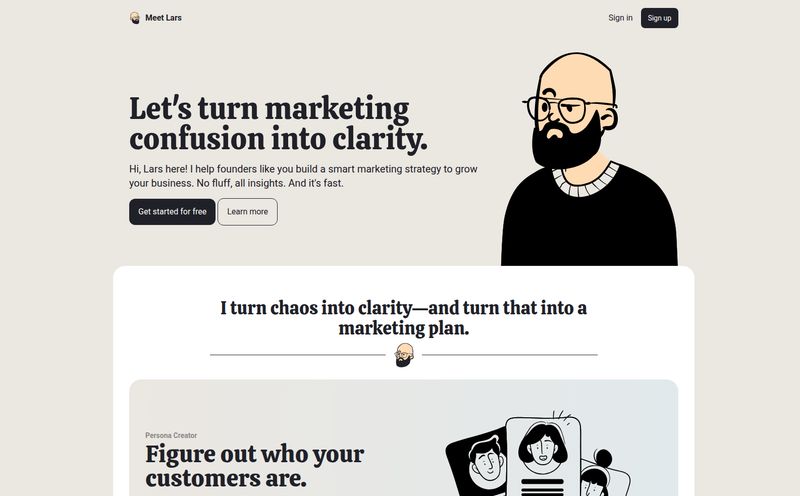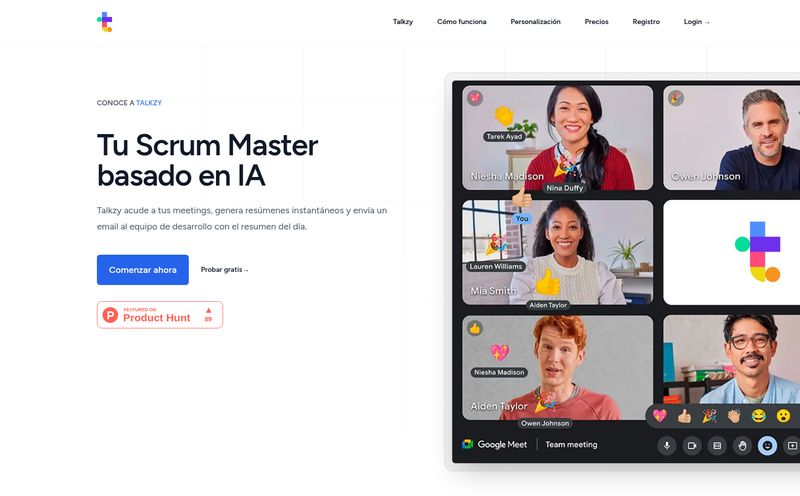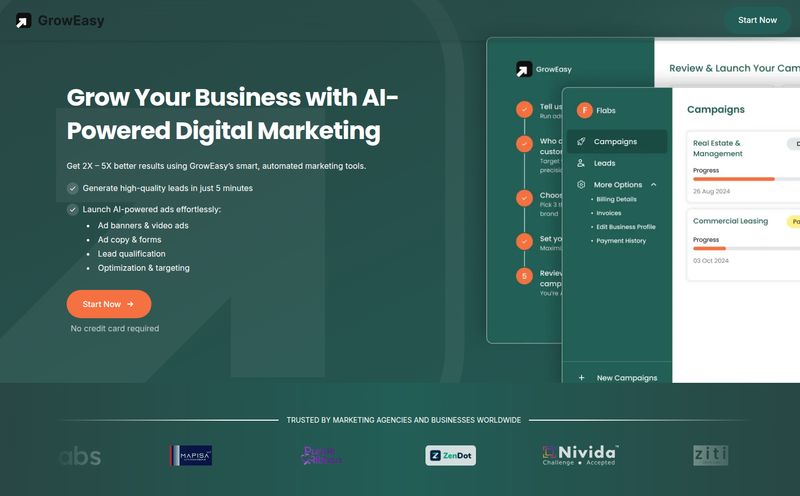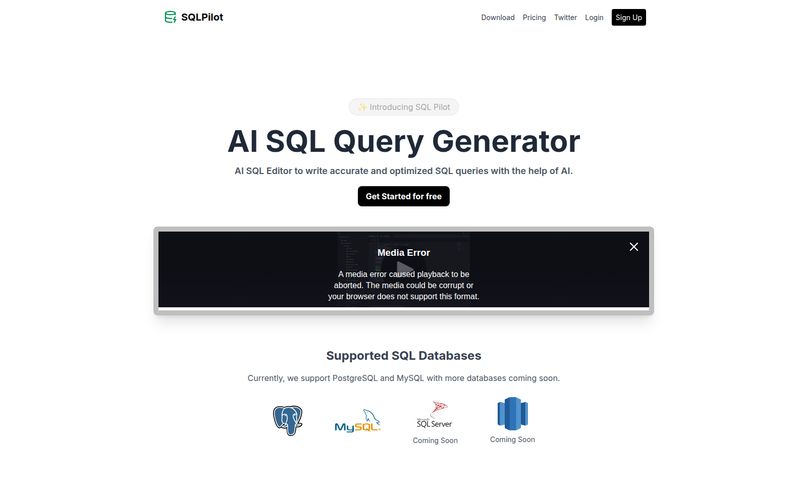Market research can be a slog. A real grind. We’ve all been there, buried under spreadsheets, trying to clean data from three different sources while a deadline looms like a hungry vulture. You're wrestling with survey logic, chasing down panel providers, and then spending days—no, weeks—just trying to make the data presentable. It’s a process held together by caffeine, hope, and way too many manual copy-paste jobs.
So, when a new platform like BioBrain lands on my desk promising to fix all that, my inner cynic immediately raises an eyebrow. The pitch is always the same, right? “Revolutionary,” “game-changing,” “seamless.” But then I saw they’re calling themselves a “next-gen MROps platform,” and I paused. MROps. Market Research Operations. Okay, maybe they get it. They’re not just talking about shiny dashboards; they’re talking about the engine room. The messy, complicated, and absolutely critical plumbing of our industry.
So, I decided to take a proper look. Is this just another tool, or is it the integrated pit crew and advanced telemetry system we desperately need?
So, What is BioBrain, Really?
At its heart, BioBrain is designed to be the central nervous system for your quantitative research projects. Forget juggling five different subscriptions for survey building, panel management, data processing, and visualization. The idea here is to bring it all under one roof. The platform’s big promise is to eliminate manual errors and deliver clean data at, and I quote, “record speed.”
They claim to unite rigorous methodologies with a massive global sample supply and some pretty slick tech. The goal? To finally achieve the holy grail of our field: impeccable data quality without the soul-crushing timeline. I've heard that before, but the MROps focus makes me think they might actually be on to something. It’s not just about the final report; it's about optimizing every single step that gets you there.
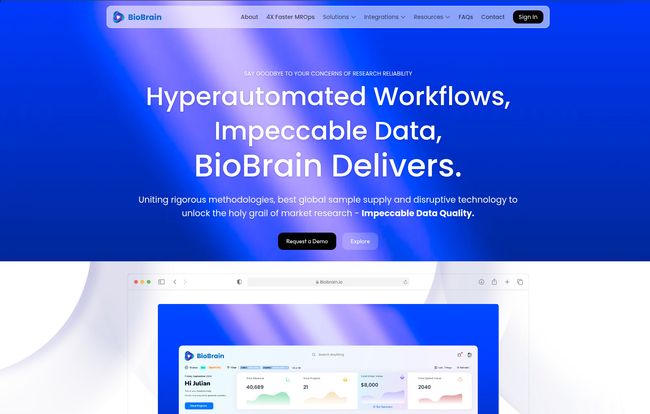
Visit BioBrain
The Core Features That Actually Matter
A feature list is just a feature list until you see how it solves a real-world problem. Here’s what stood out to me from their offerings.
Automation is the Name of the Game
The first thing that caught my eye was the emphasis on automation. We’re talking automated survey programming and fieldwork management. Think about the hours spent setting up complex survey logic, testing quotas, and monitoring respondent traffic. BioBrain aims to automate a huge chunk of that. This isn’t just a time-saver; it’s a sanity-saver. Fewer manual inputs mean fewer chances for human error. We've all made that one tiny mistake in survey setup that invalidates a whole segment of data. It’s a painful feeling.
AI That's Genuinely Useful
"AI-powered" is the new "organic," it's slapped on everything. But here, it seems to have a clear purpose. BioBrain uses AI for sentiment analysis and to create automated data summaries. This is where things get interesting. Instead of you personally having to sift through thousands of open-ended responses to gauge a general feeling, the platform can give you a preliminary read. It’s not going to replace a nuanced human analysis, of course, but as a first pass? To quickly spot trends and pull out key themes? That’s incredibly powerful. It helps you know where to start digging.
Data You Can Actually Trust
Garbage in, garbage out. It’s the oldest rule in the book for a reason. A fancy chart made from bad data is just a pretty lie. This is where BioBrain seems to be putting its money where its mouth is. They talk a big game about data validation, fraud detection, and access to over 100 pre-vetted global data sources. You can even bring your own respondent database if you want. That flexibility is key. This focus on the quality of the raw material before it even gets to the analysis stage is, in my opinion, its most compelling feature. I remember a project a few years back where we had to toss almost 30% of our completes because of bots and fraudulent responses. It was a complete disaster that this kind of tool could have prevented.
How This Changes the Day-to-Day Workflow
Let's paint a picture. Your typical quant project might look like this: spend a week programming the survey, another few days getting bids from panel providers, a week in the field (with constant monitoring), a week cleaning and processing the data, and then another week building the presentation deck. All in, you're looking at a month or more.
BioBrain's pitch is that by automating and integrating these steps, you can slash that timeline. Their website mentions research being 4X faster. That's a bold claim, but I can see the path. If programming is faster, fieldwork is managed automatically with trusted sources, and the data comes out clean and semi-analyzed, you’ve just leapfrogged the most tedious parts of the process. You get to spend less time being a project manager and more time being an actual researcher, finding the story in the data.
The Good, The Bad, and The Realistic
No platform is perfect. Let's get down to the brass tacks. Based on the info and my experience with similar platforms, here's my take:
| The Upsides | Potential Hurdles |
|---|---|
| The sheer speed is a massive win. Cutting research timelines means getting insights to decision-makers while they're still relevant. Improved data quality isn't just a feature, it's the foundation. Less time cleaning, more time analyzing. The streamlined workflow is a dream for any research manager tired of juggling a dozen tools and vendors. | There's likely an initial learning curve. A platform this comprehensive won’t be mastered in an afternoon. Relying on AI and automation requires a level of trust. You'll still want to monitor the outputs carefully, especially at first. Cost. This kind of power isn't going to be free, and the investment will be a consideration for any team. |
The Big Question: What Does BioBrain Cost?
And now for the million-dollar question. Or, hopefully, a-lot-less-than-a-million-dollar question. What's the price tag? Well, if you go looking for a pricing page on their website, you’ll be met by a cheeky 404 page telling you you're “in the Digital Wilderness.” A little bit of humor I can appreciate.
The reality is, there's no public pricing. This is pretty standard for enterprise-level B2B SaaS platforms. The cost will almost certainly depend on your usage, the features you need, the volume of respondents, etc. You’re not buying a product off the shelf; you’re investing in a solution. You’ll have to contact them for a custom quote. Don’t let that scare you off—it just means they want to talk to you to figure out what you actually need rather than selling you a one-size-fits-none package.
So, Who Is This For?
After looking it all over, I have a pretty clear idea of who would get the most out of BioBrain. In-house corporate research teams, insights departments, and market research agencies are the sweet spot. Basically, anyone who runs quantitative reserach projects regularly and feels the pain of inefficiency and data quality issues.
Who isn't it for? Probably not for the academic researcher on a shoestring budget or a student who needs to run one simple survey for a thesis. The platform is built for scale and professional rigor. It’s for teams where time is money and bad data is a disaster.
Frequently Asked Questions about BioBrain
1. What exactly is an MROps Platform?
Think of it like DevOps for Market Research. MROps (Market Research Operations) platforms are tools designed to streamline the entire operational side of research—from survey creation and panel management to data processing and reporting. The goal is to automate manual tasks, improve data quality, and speed up the entire research lifecycle.
2. Can I use my own customer list or do I have to use BioBrain's panels?
BioBrain offers flexibility here. You can leverage their integrated global panels (which they say are pre-vetted for quality) or you can use your own respondent database. This hybrid approach is great for companies that want to survey their own customers but also need to reach a broader, more general population.
3. How does BioBrain ensure data quality?
They tackle this from multiple angles. First, they use automated data validation and fraud detection to weed out bots and low-quality responses in real-time. Second, they provide access to what they call “100+ Pre-vetted Global Data Sources,” implying a high standard for their sample partners. It’s about cleaning the stream at the source, not just filtering the water at the end.
4. Is it difficult to learn how to use the platform?
While any powerful platform has a learning curve, BioBrain is designed around a streamlined workflow. The automation of complex tasks like survey programming and fieldwork should actually make it easier for teams once they're onboarded. Expect some initial setup and training, but the long-term benefit is a simpler, faster process.
5. What kind of reporting and analysis tools are included?
BioBrain includes a suite of analysis tools. You get real-time analytics dashboards, AI-powered sentiment analysis for open-ended questions, interactive data visualizations, and automated data summaries. A key output is the ability to create customizable project decks directly from the platform, which can save a huge amount of time on reporting.
My Final Takeaway
Look, the market research world is full of tools that promise the world. But BioBrain’s focus on the nitty-gritty of operations feels different. It feels practical. They seem to understand that the biggest wins don’t come from a prettier chart, but from fixing the broken, time-consuming processes that lead up to it. By tackling speed and data quality head-on, BioBrain is making a strong case for being more than just another platform. It might just be the operational overhaul that many research teams have been waiting for.
